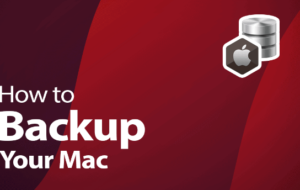There is so much backup software out there but few can really carter for your Mac as Time Machine. When it comes to providing a reliable plan B for Mac in case of any file loss or disaster, Time Machine easily tops the chart. Beyond restoring a file, you can go back in time to see what a file looked like an hour ago or at any time or date in the recent past.
You will find Time Machine pre-installed in every Mac operating system beginning with OS X 10.5. It requires an internal or external drive onto which it automatically backs up your Mac as you work. It works with Apple’s Time Capsule as well as with other hard drives.
Time Machine’s user interface and ease of setup make it a backup application you will enjoy using.

Setting Up Time Machine
Setting up Time Machine simply involves selecting the drive or drive partition you want to dedicate to your backups. Once you do that, Time Machine takes care of the rest. The setup options are limited to selecting any drives, partitions, folders, or files you don’t want to include in your backups. Time Machine notifies you when it deletes old backups unless you turn off this notification. You can also decide whether to add a status icon to the Apple menu bar.
There are other options you can make use of, such as using multiple drives to store your Time Machines data, but the advanced settings are hidden away and are not needed by most casual users.
How Time Machines Works
The first time it runs, Time Machines performs a full backup of your Mac. Depending on how much data you have stored, the first backup can take quite a while.
After the initial backup, Time Machines performs a backup every hour of any changes that occur. This means you only lose an hour’s worth of work in the event of a disaster.
Some of Time Machine’s strength lies in how it manages the space it has for backups. Time Machine saves hourly backups for the last 24 hours. It then saves only daily backups for the past month. For any data that’s older than a month, it saves weekly backups. This approach helps Time Machine make the best use of available storage space and keeps you from needing tens of terabytes of data just to keep a year’s worth of backups on hand.
Once the backup drive is full, Time Machines deletes the oldest backup to make room for the newest. This is important to note: Time Machines does not archive data. All data is purged eventually in favor of more recent backups.
User Interface
The user interface consists of two parts: a preference pane for setting up the backups and the Time Machine interface for browsing through backups and restoring data. The Time Machine interface is fun to use. It displays a Finder-type view of your backup data and then presents the hourly, daily, and weekly backups as stacks of windows behind the most recent backup. You can scroll through the stack to retrieve data from any backup point in time.
from WordPress https://ift.tt/3g7m9Lx
No comments:
Post a Comment